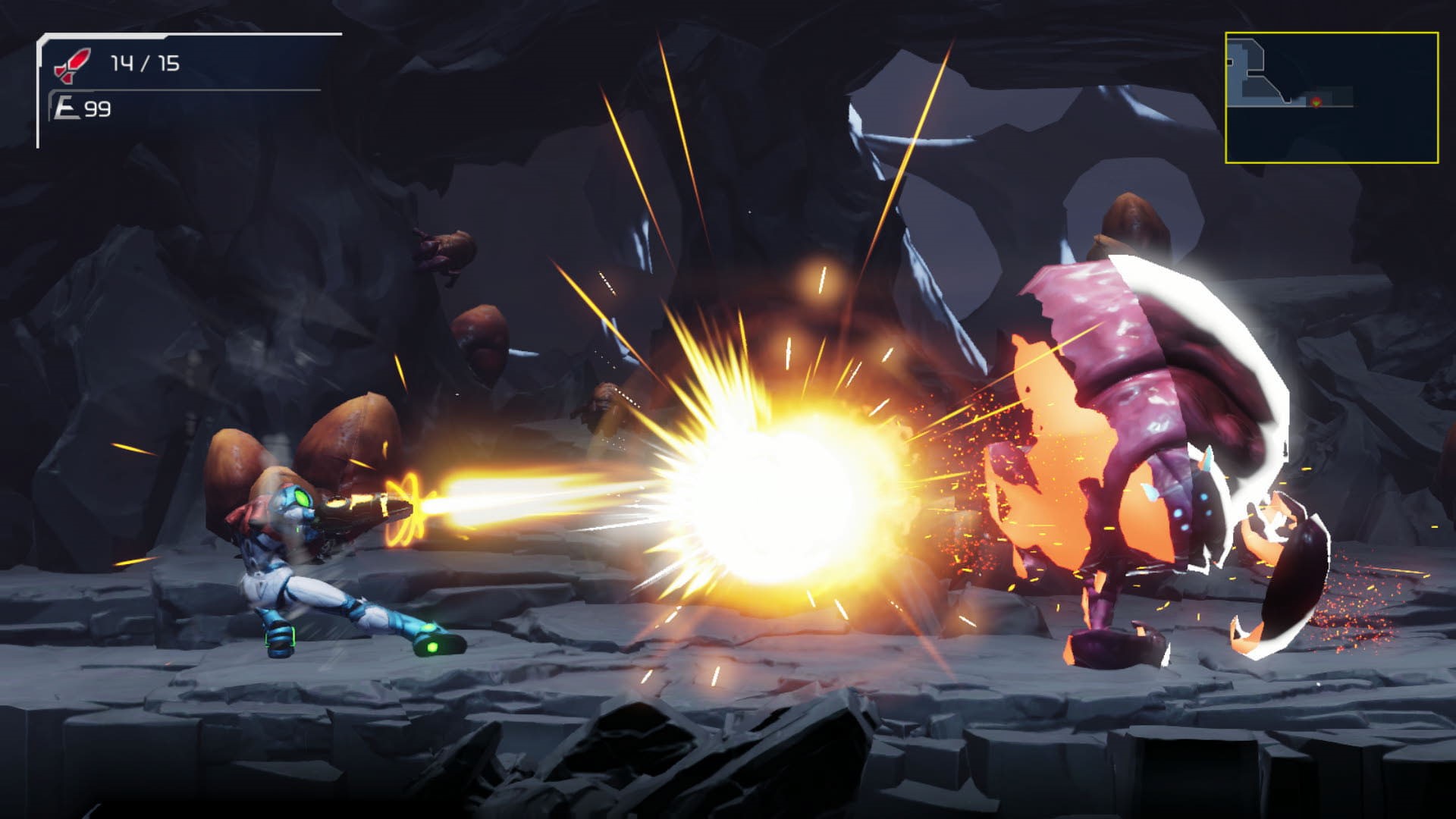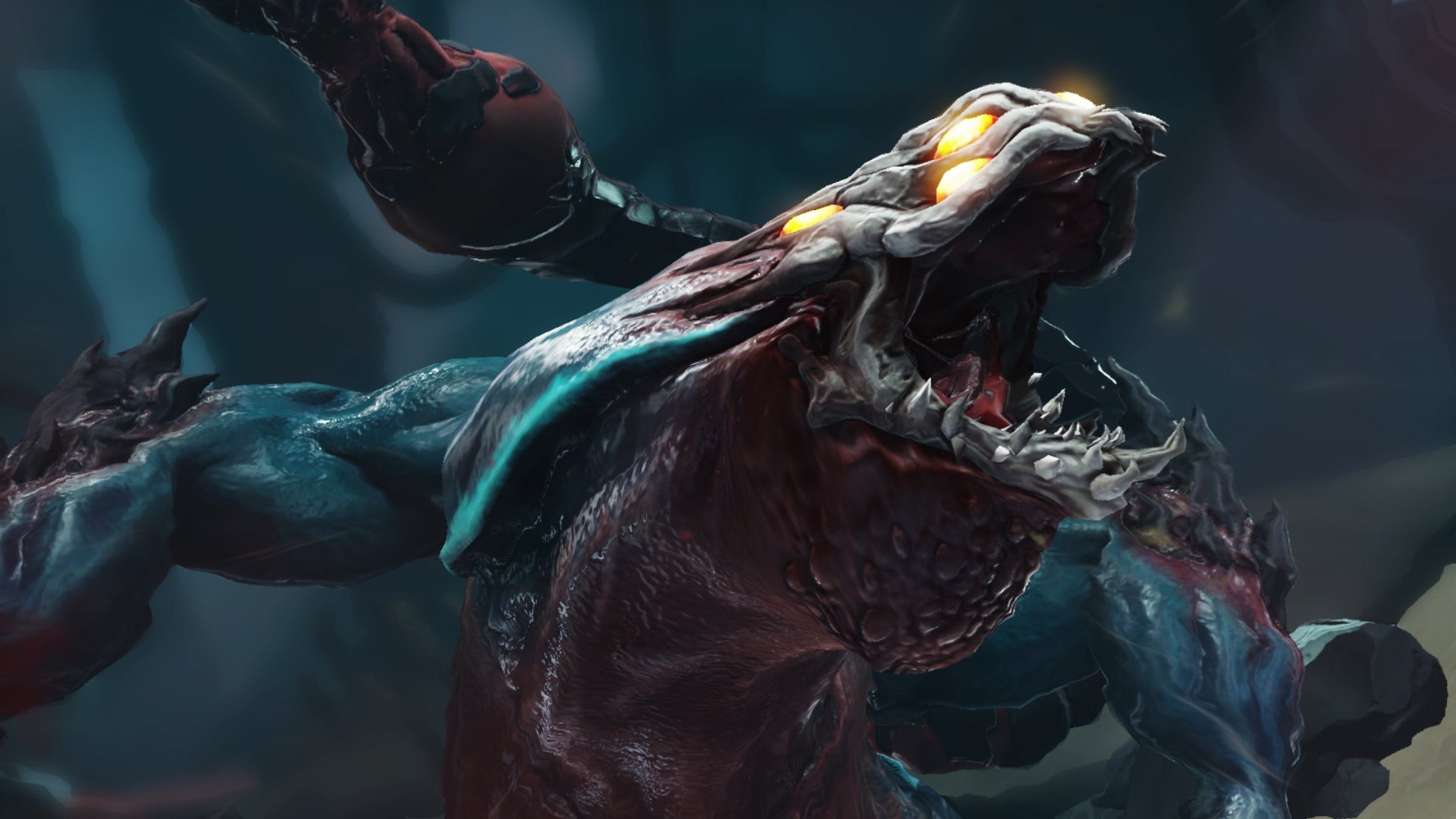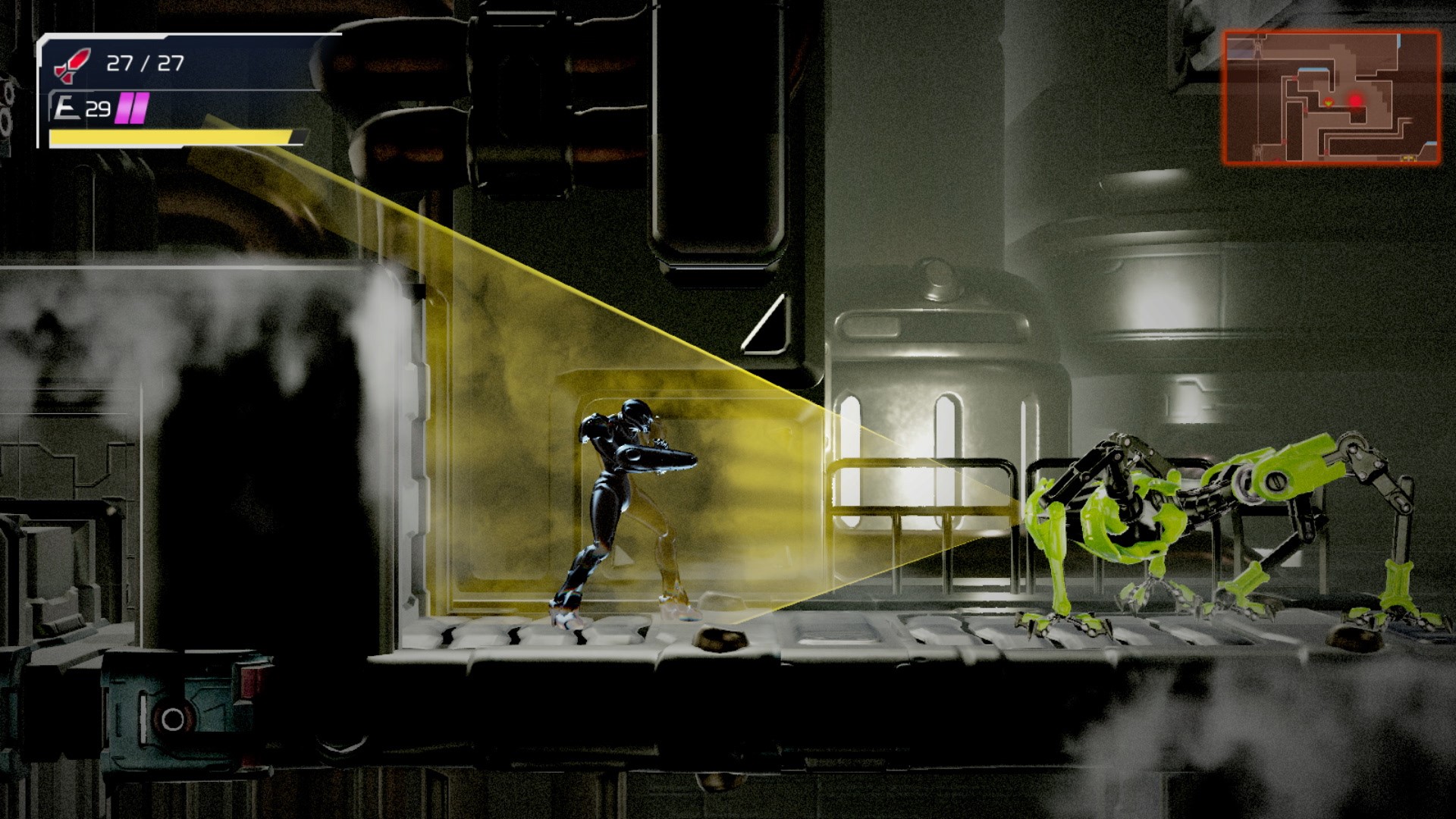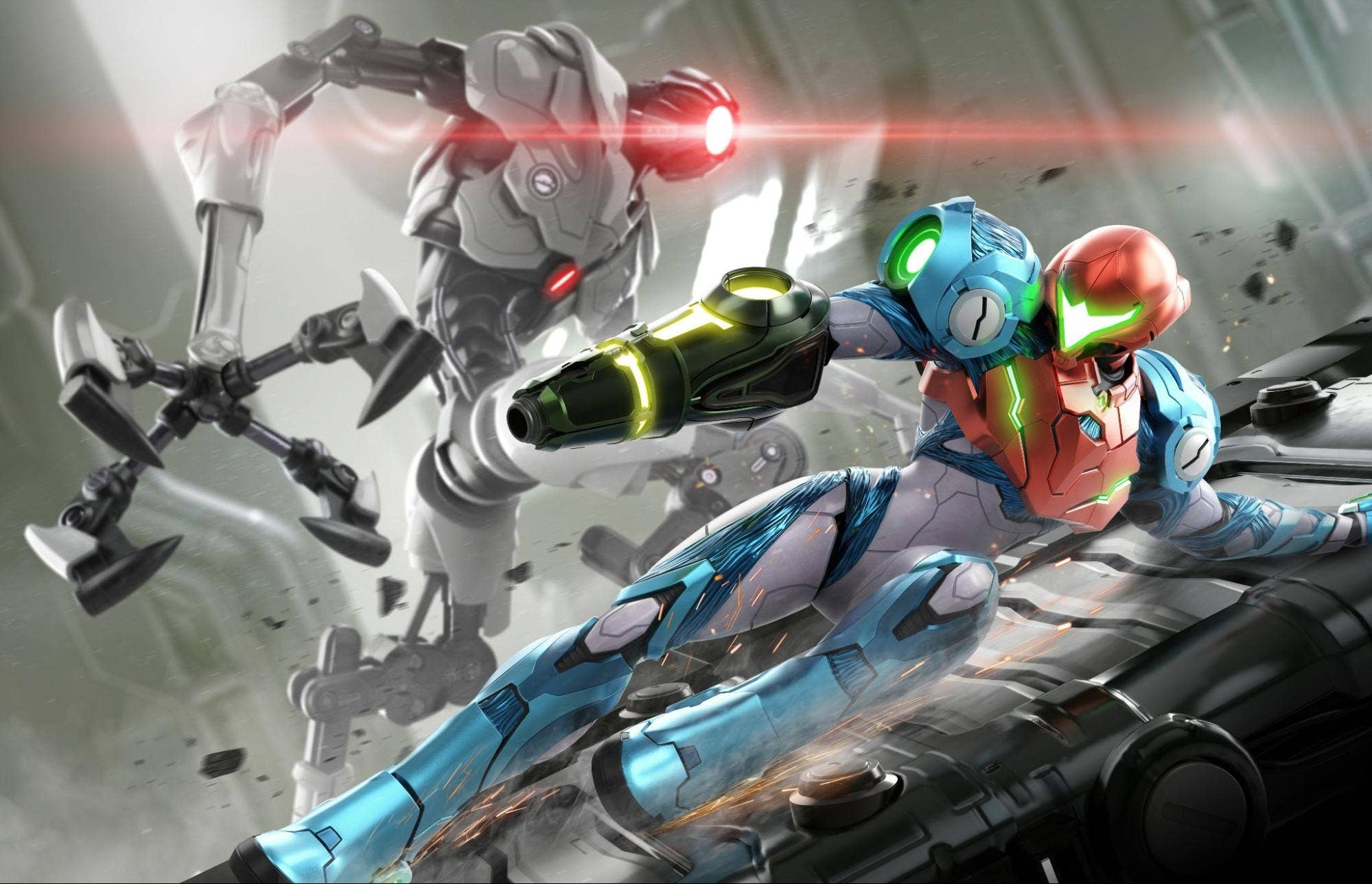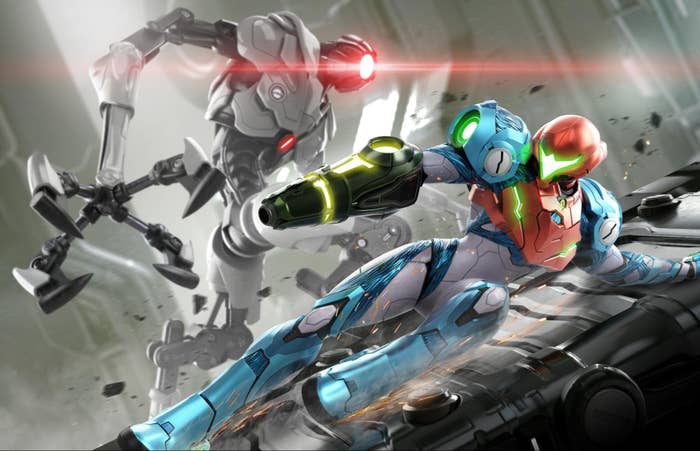
Metroid Dread, befitting its name, is filled with tension and anticipation. You’re tracking down rumors of a resurgent parasitic organism that could destroy humanity, and your investigation takes you to the alien world of ZDR. Once an outpost for an ancient civilization, the planet has since been reclaimed by nature in a hostile takeover. The vegetation is lush and overgrown; bordering on claustrophobic. The rain beats down constantly. Bubbling lava fills spaces once inhabitable.
Environmental diversity is a signature of the Metroid franchise. You begin Metroid Dread with just enough firepower and armor to get your first upgrade. Along the way, you see alternate paths and doors that are inaccessible; maybe one requires a weapon or gadget that you haven’t acquired, and even if you got the weapon, your armor is still too weak to withstand the extreme heat or cold on the other side of that door.
Ironically, the density and inaccessibility of this level design invites exploration. Hours later into your playthrough, you’ll get the upgrades you need, and you’ll find yourself backtracking, opening up new paths and ways of exploring old environments. It’s an addictive feedback loop, where the development of the in-game character parallels the increasing sufficiency of the player.
In Super Metroid (1994), widely considered the pinnacle of the franchise, the planet Zebes was thematically divided into six distinct areas, each characterized by unique wildlife and obstacles. Norfair was the lava area. Maridia was the water area. Brinstar was the plant area. In Metroid Dread, ZDR has nine areas, each with their own biodiversity and feel. Getting to a new area means mastering the terrain of the prior one. And once you’re in the NEW new area, the cycle of discomfort begins anew. Again, you’re out of your depth and barely holding your own against a new, stronger wave of enemies, until you acquire the abilities and requisite skills to move on to the next level. And more formidable challenges. Rinse, lather, repeat.
You play as longtime protagonist Samus Aran, a galactic bounty hunter who, aside from a single line of dialogue in an alien language, is silent. It’s a quirk that reads as strong and no-nonsense; throughout the franchise’s history, the character’s silence has allowed players to identify with Samus — to project their own interpretations on the character’s inner life and motivations. In Metroid Dread, Samus has expressive body language to counterbalance her lack of speech. A shift of weight, from one leg to the other, communicates readiness, bemusement, or contempt. We get the impression that she is unshakeable. Facing down a massive (familiar) monster that’s two screens tall, she doesn’t waver and even fires a lackadaisical first shot.
Samus is defensively weaker than she’s previously been; even a handful of generic monsters can take her down, especially in the game’s early going. Your best option is to lean on your melee counterattack; right before the enemy makes contact, you’ll see a brief yellow flash. This is your window of opportunity to press X, which blocks the attack, and then press Y to fire a massive shot of energy, destroying the monster in a single hit. Pulling off the perfect counterattack also gives you more energy, Missiles, and Power Bombs than if you took down the enemy the normal way. It’s notable how empowering and viscerally good this counterattack mechanic feels. And those little boosts of adrenaline are necessary, because they balance out the slower, more contemplative moments.
